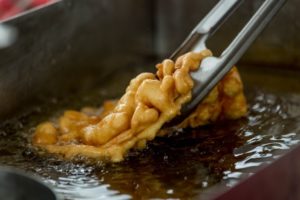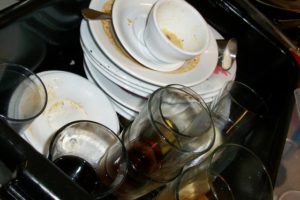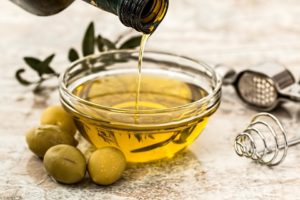
The modernisation of the food industry has seen a lot of improvements and additions to a commercial kitchen. Every year, more of these commercial kitchens and food joints are opened, all offering different cooking practices and cuisines to an ever-ready clientele.
With commercial kitchens producing more food than ever before, waste becomes a normal occurrence. Some of the waste finds itself in our environment. This is an unavoidable and sad reality, yet from it, you get to enjoy a well-prepared meal from your favourite restaurant.
Governments, in an effort to ensure that commercial food establishments are responsible for managing the waste, have come up with laws that enforce responsibility and ensure that the environment is not harmed.
One such law pertains to FOG and Grease Traps.
A considerable amount of food preparation techniques require the usage of oil and fats. Most of these oils and fats end up as waste which is then discarded from the kitchen through various means. Improper disposal of these waste materials can result in the formation of grease build-ups which in turn cause harm to the environment.
Some of the effects of improper disposal of FOG in the environment include the formation of fatbergs. These, in turn, accumulate in drainage and sewerage systems causing blockages and potential damage to the environment and wildlife.

Grease Management Systems
Grease management systems work by preventing fats, oils, and grease (FOG) from getting into the drainage systems where they can accumulate. Businesses are urged to be more proactive than reactive when it comes to grease management. This, they can do by installing proper grease management systems such as:
- Grease traps- Also known as grease interceptor and grease recovering device. It works by collecting FOG before entering drainage systems. They come in different sizes to meet different drainage requirements.
- Grease removal systems (GRUs) or separators- They separate FOG from grey water and collects it to prevent clogging.
- Biological dosing- This uses bacteria to act on the grease and breaks it down before it enters the drainage system. It is ideal in situations where grease traps would cause hygiene concerns. Dosing units are installed to periodically release the bacteria and nutrients which the acts on the FOG.
Each grease management system is effective for what they were designed to do. However, the results are not always 100%. None can guarantee that all FOG will be kept out of the sewers. Some businesses choose to double up equipment to increase effectiveness.
Laws and Legislation on Grease Management
Currently, grease management systems are not compulsory by law. However, catering and foodservice establishments are legally responsible for any blockages in the sewers directly linked or traced back to their premises.
There is a number of legislation surrounding grease management. They include:
- The British Building Regulations (document, section 2.21) which requires new build commercial food establishments serving hot food to install grease traps or separators.
- The water industry act 1999 indicates that it is a criminal offence to allow any matter to enter the drainage systems which may impend the natural flow of waste matter
- Section 59 of the Building Act 1984 states that a local authority can require satisfactory drainage. This makes it possible for the relevant authorities to enforce grease management mechanisms.
- The Food Safety Act 1990 stipulates that any build-up or blockage caused by FOG in drains fails to comply with food hygiene regulations. Businesses found to be in contravention of this law can suffer heavy repercussions.
These are some of the many laws that govern the handling of grease in commercial food establishments.
Water companies run routine checks on businesses dealing with hot food to ensure that there is proper installation and usage of grease traps. This is to ensure that businesses whose actions can lead to the introduction of FOG in drainage systems are compliant with the set standards. They can and will issue fines should a business owner neglect using the right grease management systems. 
Grease Management Practices
Normally, FOG is introduced into the drainage systems through various practices carried out in the kitchen. Practices such as dishwashing, cleaning of floors and sanitation practices might end up pushing some of the spilt FOG into these systems. It is why grease management is advised.
Grease management doesn’t just have to be the equipment that you buy and install. While such equipment is important in ensuring that FOG does not end up in drainage systems, it is also important to note that you can take come counteractive measures to reduce that amount of FOG that lands in the grease traps.
Remember, just because a business has installed a grease trap doesn’t make it immune from prosecution should a fatberg form. If the grease management system isn’t correctly installed or is neglected in terms of cleaning and maintenance it will be useless, allowing FOG to filter into public waterways. Businesses can still be prosecuted if it is proven that their ineffective grease trap has contributed.
This is why it is important to incorporate these Best Management Practices in your business. It is also important to ensure that your staff is properly educated on these helpful practices. This also includes:
- Using proper signage such as “NO GREASE” in front of sinks and dishwashers as a constant reminder. This acts as an ever-present reference for people working in the kitchen.
- Educating your staff on how to handle old cooking oil. Practices such as ensuring that the collection barrels are covered and airtight at all times to prevent spillages and contamination.
- A simple instruction to cooks and chefs on being conservative when using some of these cooking oils can also go a long way in reducing the amount of FOG finding itself in the drainage systems.
- Viable and edible excess food can also be donated to prevent wastage. Some of the grease and oils used in preparing these foods will end up in drainage systems if the food is discarded.
There are a number of in-house practices that can reduce/limit FOG entering the sewer. These include:
Dry Clean-up
This involves first wiping, scrapping, and sweeping of kitchen surfaces and equipment before introducing water. You can easily use a rubber scraper on cookware, utensils, serving ware, and chaffing dishes before washing them. Food grade paper absorbs oil in frying utensils thus reducing the amount of grease that may be discarded into the drainage systems.
Use paper towels for surfaces to eliminate grease. Cloth towels might not be ideal for this kind of an operation because cleaning them will introduce FOG into the drainage system anyway.
Do not pour any grease and oils down the drain.

Prevent Spills
Spills are a common occurrence in busy commercial kitchens. These can be avoided by keeping the workplace clean and dry at all times. This prevents accidents.
Cover food when cooking if possible and ensure that food transportation from one point to the other or from one utensil to the other is carried out using the right equipment to prevent spillages.
Proper Management of Grease Management Equipment
While grease traps and GRUs are ideal, there is little they can do if routine maintenance is not carried out. This also includes ensuring that they are properly fitted. Cleaning them regularly to prevent the stockpiling of trapped FOG will also raise the hygiene standards of your drainage system.
Recycling
It is possible and advisable to recycle waste cooking oil and use it for other purposes. In the UK, this practice is mainly carried out by the environment agency however other licensed contractors are available.
Save for the reusing practices in many kitchens, old cooking oil is collected in containers and turned into other usable fuels.
For example, vegetable oil can be turned into motor fuel through a process known as hydrocracking and hydrogenation. These processes aim at turning them into fuel such as diesel. It is usually referred to as renewable or green diesel. It can also be turned into oils used for heating processes.

Use the Right Dishwashing Practices
A 3 sink dishwasher system is ideal in this situation. It basically involves three steps of cleaning which ensure proper grease management. Utensils are first taken through Pre-wash, wash, and rinse stages.
Every utensil should be wiped clean before being loaded into a dishwasher. This gives you the chance to collect all grease and oils into one place for proper disposal.
For automatic dishwashers which use hot water, setting the right temperature is always advised. If the water is too hot then the grease will melt and slip through grease traps before cooling down on the other side, potentially bypassing any grease trap you have in place.
Mind sewer drains
This is applicable when cleaning equipment such as grease hoods and filters. While they should be cleaned to prevent eventualities such as kitchen fires caused by greasy surfaces, always ensure not to clean them near drainage systems where waste product and residue can accumulate.
Proper Grease Management is good for you
Installing a grease trap or a grease recovery unit (GRU) is not only important for your business, but it is also a show of responsibility for a business owner. Installation and appropriate grease management saves money, not only for the water companies who pay the bill for clearing fatbergs but also for the public and businesses who ultimately foot the bill when these additional costs are filtered through to the general public in an increase to water rates.
You will, therefore, save more by installing a grease trap or GRU because then you will avoid heavy fines from water companies. Additionally, you have peace of mind that you’re doing your bit for the environment.

Leave a Comment
Your email address will not be published. Required fields are marked *